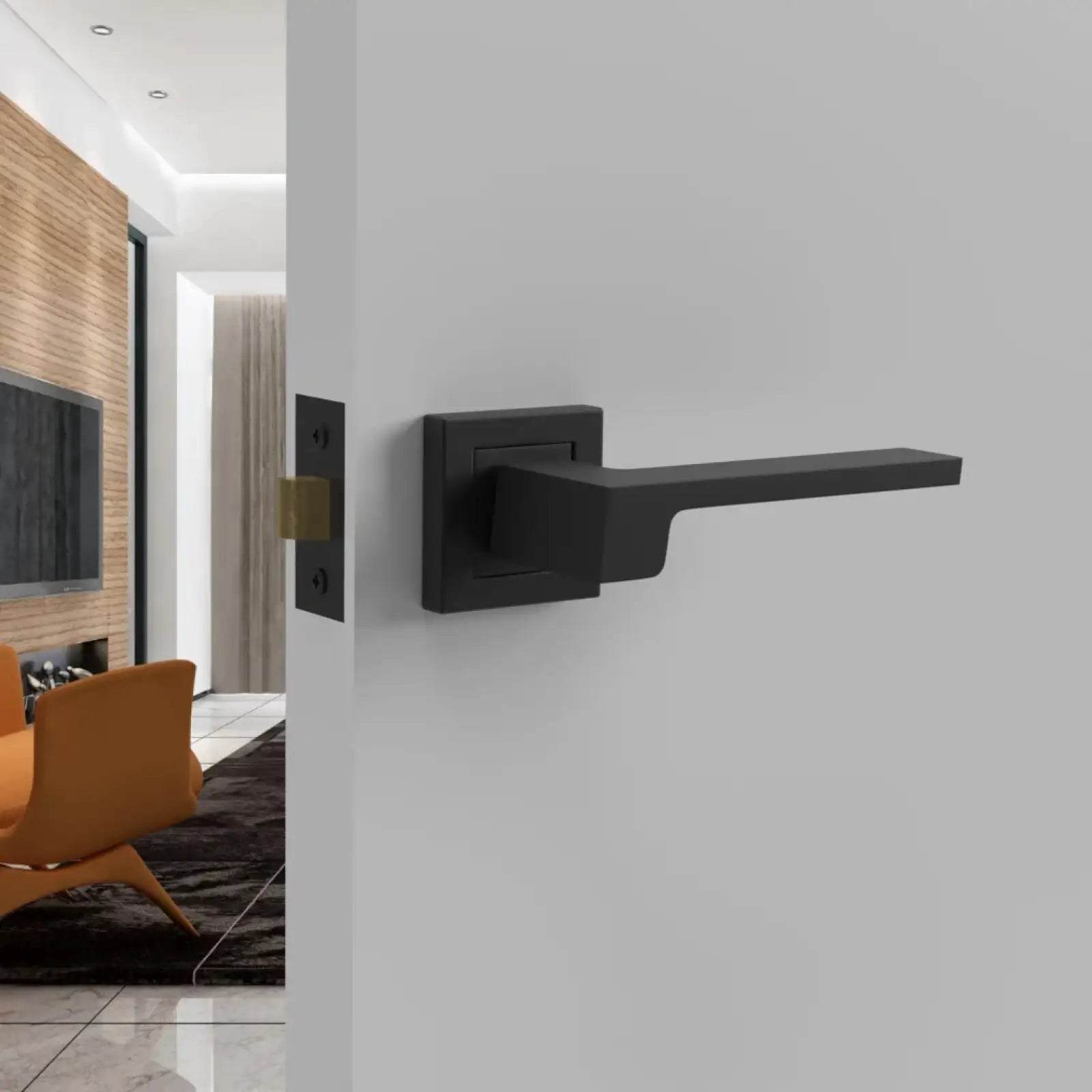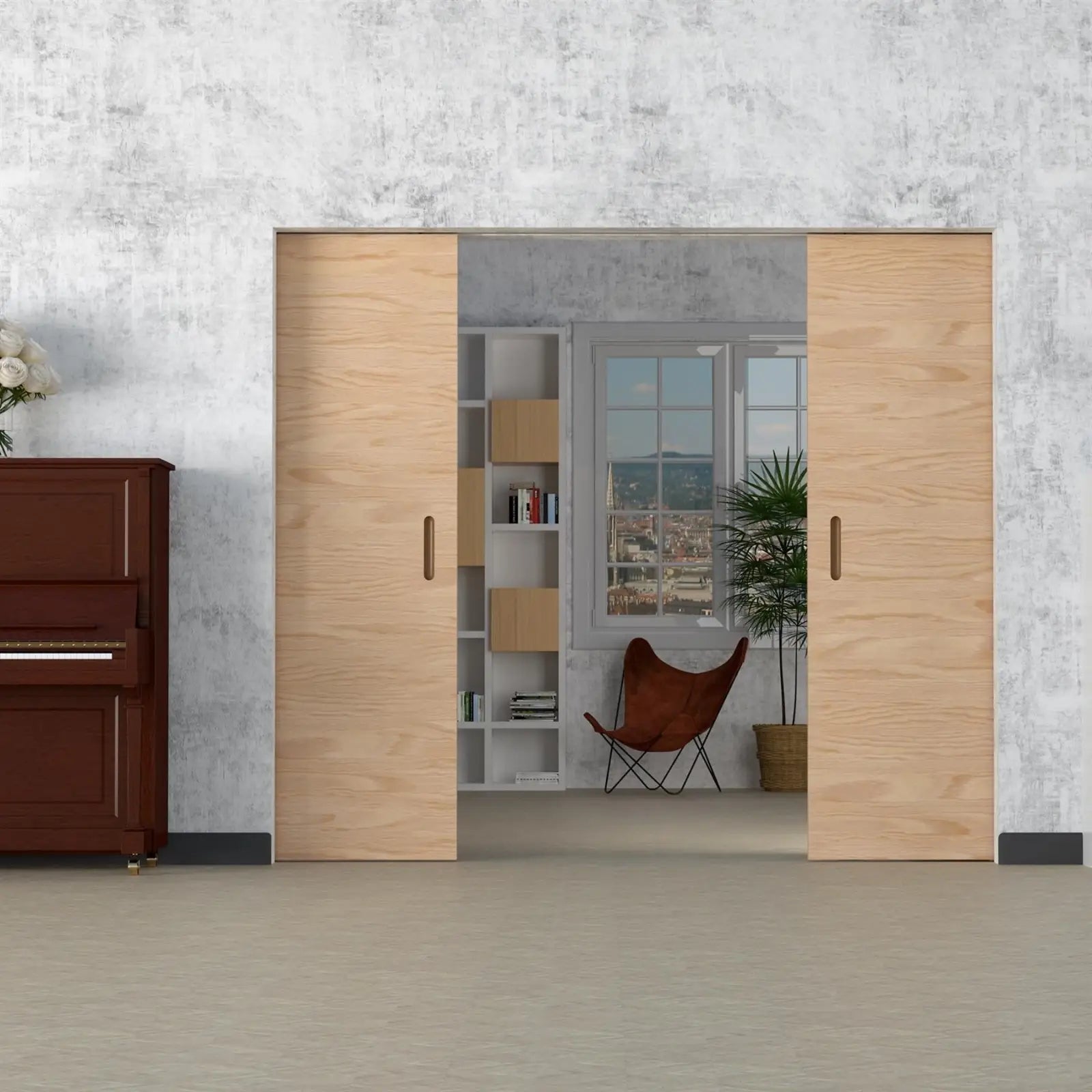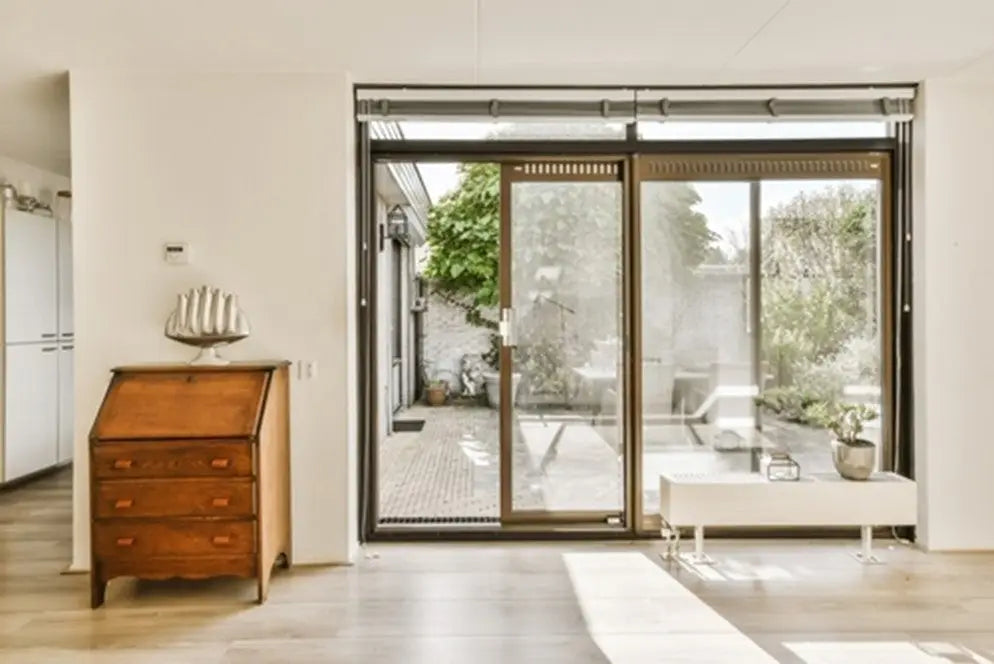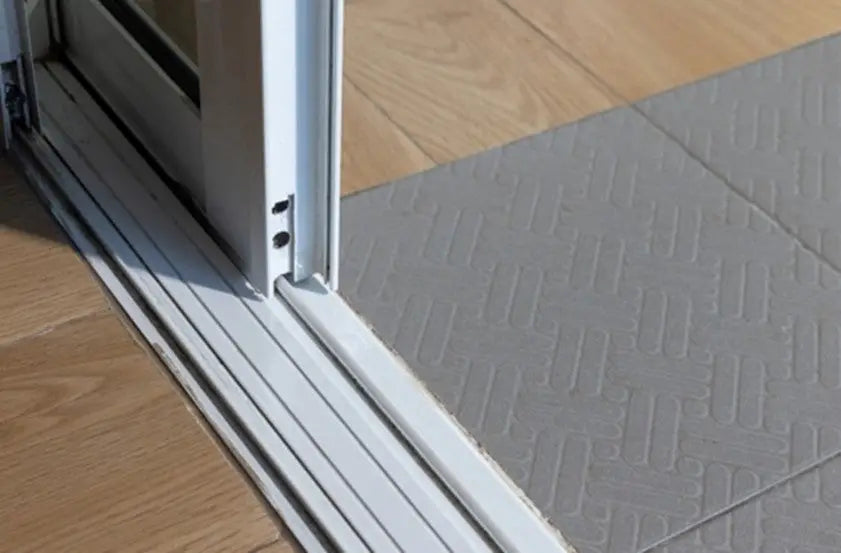Kitchen Cabinets Knob Placement Guide
One of the first things you notice when you walk into a kitchen is the cabinets and their knobs or pulls. If installed incorrectly or misaligned, trust us, everyone will notice. To ensure you install your kitchen cabinet handles and knobs correctly, follow along with our handy cabinet knob placement guide to know where to install knobs on kitchen cabinets.
Ideal Placement for Knobs on Kitchen Cabinets
The ideal placement for your kitchen cabinet knobs depends on the following important factors:
- Functionality: Knobs should always be placed so they are easy to access and comfortable to use. For upper cabinets, they are typically positioned on the lower corners of the doors. For lower cabinets, they are placed on the upper corners.
- Aesthetics: Symmetry and alignment with cabinet edges or adjacent fixtures are important factors to consider if you want to create a cohesive look.
- Cabinet size: When placing knobs on larger or tall cabinets, you may want to adjust the placement to create a better visual balance, while still ensuring everyone in the home can access them.
- Style: The design of the knobs and the kitchen style (modern, traditional, etc.) can influence whether knobs are centred or offset.
- Your preference: You may want to customise where the knobs are placed based on your habits and ergonomic needs.
Best Height for Installing Knobs on Upper and Lower Cabinets
Whether you’re installing an upper or lower cabinet will determine where you install knobs on kitchen cabinets. Knobs for lower cabinets are placed at the bottom of the cabinet door’s edge, and knobs for upper cabinets are placed at the top of the door edge. As a cabinet knob placement guide, you can install the knobs anywhere between 2.5cm and 5cm from the door edge – depending on what looks best for you.
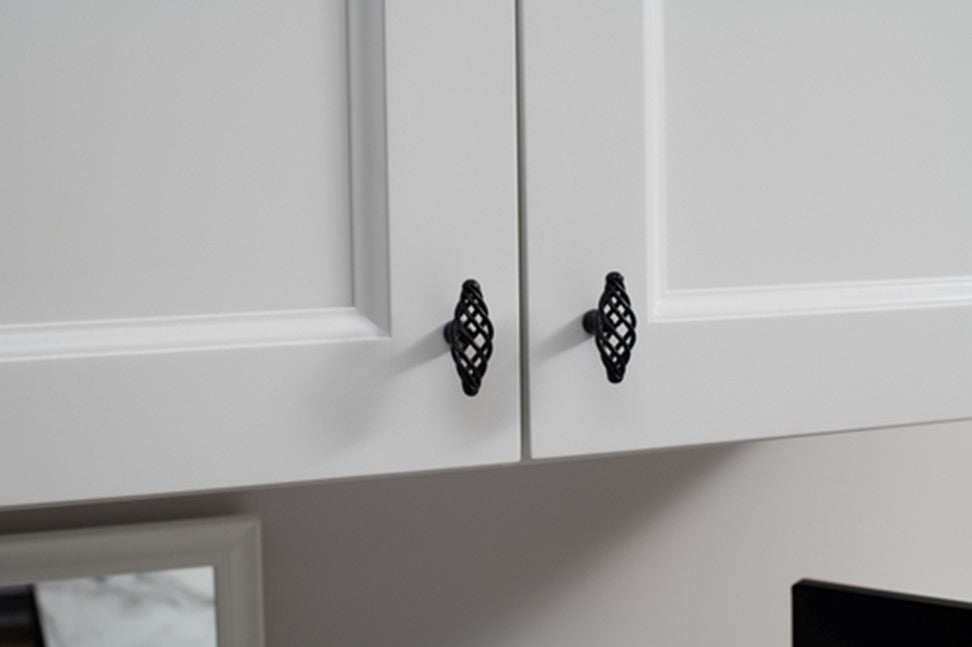
How to Position Knobs on Drawer Fronts for Easy Access
- Horizontal centre placement: Knobs are typically placed horizontally in the centre of the drawer front for a balanced appearance. Measure the width of the drawer, divide it by two, and mark the centre point.
- Vertical placement: For smaller drawers (e.g., under 30cm tall), the knob is usually positioned vertically in the centre of the drawer.
- For larger drawers: The knob is often placed slightly above the vertical centre. This placement makes it easier to pull the drawer open without much effort, especially for heavier drawers.
- For double knobs on wide drawers: For wide drawers (typically over 60cm), two knobs are used for even weight distribution. These are usually placed equidistant from the centre point, about one-third of the drawer width apart.
Correct Placement for Cabinets with Different Styles and Sizes
Proper cabinet placement can help maintain practical and design aesthetics in your space. Base cabinets should align with countertops, while wall-mounted cabinets should be positioned at a comfortable height, typically 18 inches above the counter; always keep in mind the people you’re installing them for, because they must be accessible before they are beautiful. For different styles and sizes, maintain consistent spacing and align cabinetry edges to create a cohesive, polished look that complements the rest of the room’s design and layout.
Tips for Symmetrical and Consistent Knob Placement
Symmetrical and consistent knob placement on kitchen cabinets enhances both aesthetics and functionality. Here are some practical tips to achieve it:
- Always measure and mark the exact place where the knob will be placed before drilling. Use a hardware-aligning template or cabinet jig to ensure the placement is consistent across all cabinets and drawers.
- Use masking tape or adhesive putty to temporarily attach knobs before drilling to test their placement. Step back and take a look to see if it’s a good placement.
- Ensure knobs align horizontally with knobs or handles on neighbouring drawers for a cohesive look.
- Ensure you match the size and shape of the knobs to the cabinet. Generally, larger cabinets need larger pulls, while smaller cabinets look better with smaller knobs.
- Before permanently attaching the knobs, double-check that the door swing clears other cabinets and walls and doesn’t get in the way.
- Choose knobs with durable finishes that will last a good couple of years and can withstand heavy use.
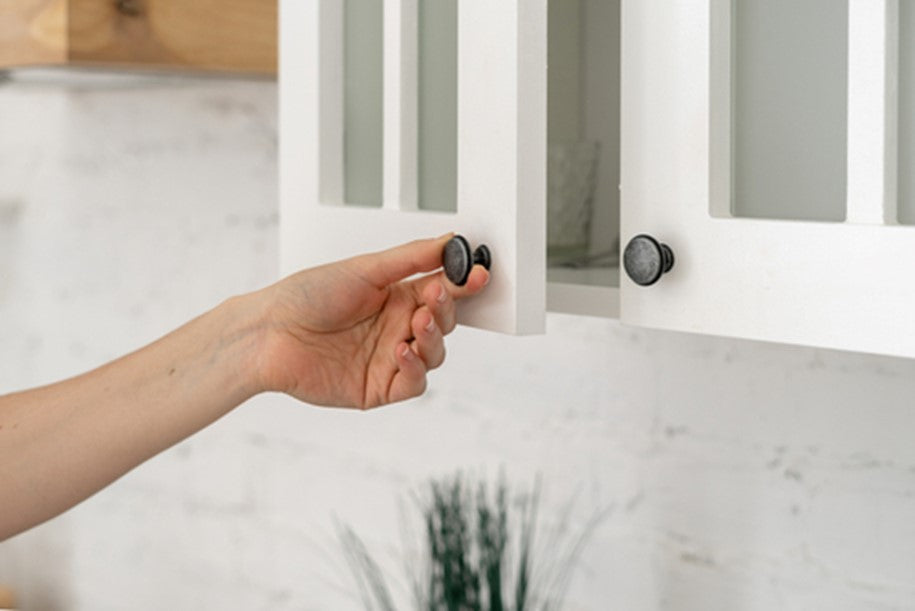
Avoiding Common Mistakes When Installing Knobs
Installing cabinet knobs may seem straightforward, but common mistakes can affect functionality and aesthetics. Here are some of the most frequent errors and how to avoid them:
- If you place knobs too close to the edge of the cabinet door, it may cause wear and tear over time and make it uncomfortable to use.
- Drilling screws directly into cabinets without pre-drilling pilot holes can cause the wood to crack and the knobs to be misaligned. Pre-drill with a bit slightly smaller than the screw's diameter.
- Inconsistent placement across drawers and cabinets will create a mismatched, uneven appearance. Not aligning the hardware with the cabinet’s lines, such as the frame or style, will make the design look off.
- Choosing cabinet hardware that’s too small or too large for the cabinet size can throw off the balance, making it look out of place.
- Pulls that aren’t centred on drawers, especially larger ones, can feel unbalanced and hinder the opening of the drawer.
- Rushing, relying on eyeballing and skipping measurements will almost always lead to uneven results, so take your time to measure accurately and double-check knob placements.
How to Install Knobs on Cabinets with Different Materials and Finishes
By tailoring your approach to the material and finish of the cabinets, you can ensure a secure, professional-looking knob installation without damaging the cabinetry. Here’s your cabinet knob placement guide for different cabinet materials and finishes:
Solid Wood Cabinets
Pre-drill pilot holes using a drill bit slightly smaller than the screw diameter to prevent splitting the wood. Ensure the screws are long enough to secure the knob without poking through the opposite side. Avoid over-tightening, as this can damage the wood or compress it, leading to loose knobs over time.
Medium-Density Fiberboard (MDF) Cabinets
MDF is less durable than solid wood and prone to chipping or breaking if you use excessive force. For extra strength, apply wood glue or place an insert in the drilled hole. Drill carefully to prevent cracking and chipping.
Laminate Cabinets
Laminate is a thin coating applied over wood or MDF and is prone to chipping during drilling. To protect the coating, apply masking tape where you are going to drill. Begin drilling at a low speed to gently penetrate the laminate without cracking or damaging it.
Metal Cabinets
You’ll need metal drill bits, such as those made of cobalt or titanium, to pierce metal. Use masking tape to mark the drilling location and protect the surrounding area. To secure screws properly, use longer screws or bolts along with washers for extra stability.
Get the Best Kitchen Cabinet Knobs from Decor and Decor
We’ve gone to great lengths to ensure every kitchen cabinet knob in our extensive range is ergonomically designed, ensuring you can open cabinets and drawers comfortably and effortlessly. Plus, we’ve covered every style and taste – from eclectic to contemporary to vintage and traditional. Browse our selection and give your kitchen cabinets the makeover they deserve!
FAQs
How do you ensure cabinet knobs are positioned symmetrically?
Measure and mark precise placement points using a template or a measuring tool to ensure consistent alignment. Next, verify the accuracy of your measurements by checking them against edges and surrounding fixtures. Once you've confirmed all measurements are correct, you can proceed with drilling.
Can you install cabinet knobs too high or too low for comfort?
Yes, installing cabinet knobs too high or too low can make opening and closing cabinets awkward and inconvenient. Proper height placement is essential to ensure comfortable use and maintain ergonomic efficiency. Always consider the standard height guidelines or test different positions to find the most practical placement.
What tools are needed to install kitchen cabinet knobs accurately?
To install kitchen cabinet knobs accurately, you’ll need a measuring tape or ruler, a template or jig, and a pencil or marker for precise placement. A drill with appropriate drill bits is essential for creating the mounting holes, along with a screwdriver for securing the knobs. Additional tools like a spirit level and masking tape can help ensure alignment and protect cabinet surfaces during installation.



